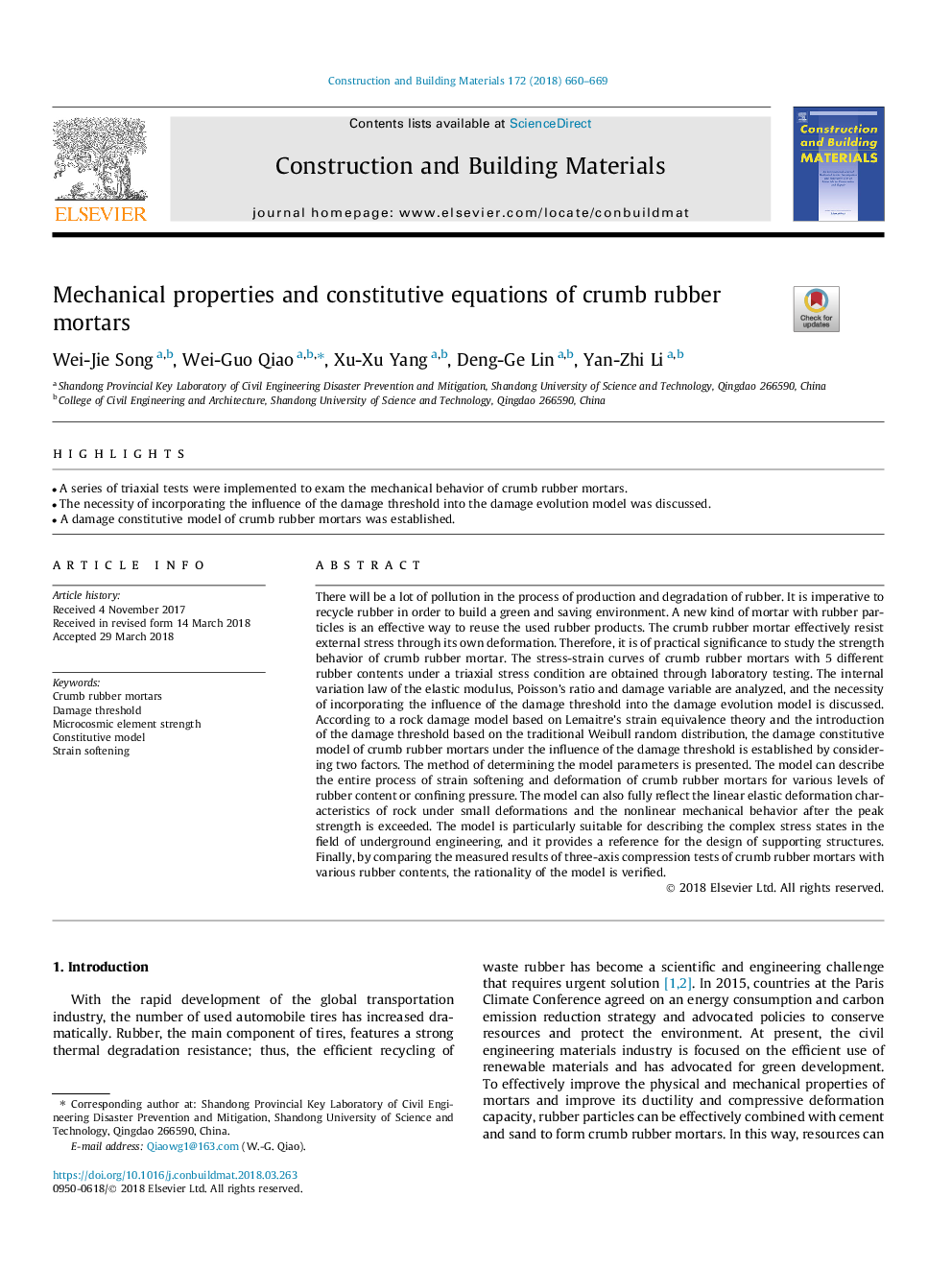| Article ID | Journal | Published Year | Pages | File Type |
|---|---|---|---|---|
| 6714007 | Construction and Building Materials | 2018 | 10 Pages |
Abstract
There will be a lot of pollution in the process of production and degradation of rubber. It is imperative to recycle rubber in order to build a green and saving environment. A new kind of mortar with rubber particles is an effective way to reuse the used rubber products. The crumb rubber mortar effectively resist external stress through its own deformation. Therefore, it is of practical significance to study the strength behavior of crumb rubber mortar. The stress-strain curves of crumb rubber mortars with 5 different rubber contents under a triaxial stress condition are obtained through laboratory testing. The internal variation law of the elastic modulus, Poisson's ratio and damage variable are analyzed, and the necessity of incorporating the influence of the damage threshold into the damage evolution model is discussed. According to a rock damage model based on Lemaitre's strain equivalence theory and the introduction of the damage threshold based on the traditional Weibull random distribution, the damage constitutive model of crumb rubber mortars under the influence of the damage threshold is established by considering two factors. The method of determining the model parameters is presented. The model can describe the entire process of strain softening and deformation of crumb rubber mortars for various levels of rubber content or confining pressure. The model can also fully reflect the linear elastic deformation characteristics of rock under small deformations and the nonlinear mechanical behavior after the peak strength is exceeded. The model is particularly suitable for describing the complex stress states in the field of underground engineering, and it provides a reference for the design of supporting structures. Finally, by comparing the measured results of three-axis compression tests of crumb rubber mortars with various rubber contents, the rationality of the model is verified.
Related Topics
Physical Sciences and Engineering
Engineering
Civil and Structural Engineering
Authors
Wei-Jie Song, Wei-Guo Qiao, Xu-Xu Yang, Deng-Ge Lin, Yan-Zhi Li,
